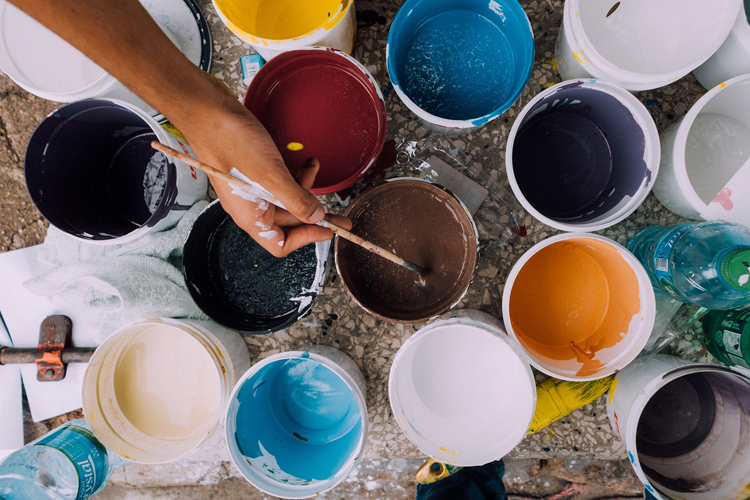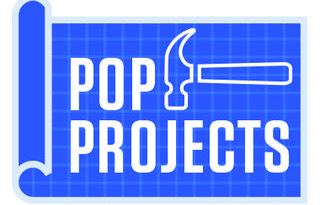How to DIY a dresser – Curbed

Welcome! This week I’m filling you in on a modest DIY project we tackled while in extreme nesting mode. Plus, extra-affordable shopping picks that are as attainable as they are cozy, some spicy gossip, and more. —Kelsey
:no_upscale()/cdn.vox-cdn.com/uploads/chorus_asset/file/16389236/EditorsNote_Rule.jpg)
Adventures in DIY
My husband bought a tall dresser in untreated pine from Ikea when he first moved to D.C. It wasn’t going to be his forever dresser, but it got the job done. Flash forward one year—to us in the middle of a lengthy to-do list, prepping our recombined apartment before the arrival of a baby. Budget-wise, we prioritized a new bed (which we love), and next to it, that raw Ikea was begging for intervention.
A recent Instagram post in which designer Sarah Sherman Samuel sings the virtues of refinishing a dresser with a coat of paint inspired me to try my hand at painting it. (And then I remembered her dresser hack from a few years ago, which sounded easy enough, even for a crafty but amateur DIY-er like myself.)
After something of a goose chase to get our paint—following a somewhat misleading recommendation to get your paint turned into spray cans, which I’m not sure is a thing outside of Michigan—we decided on Coriander & Olive from Sherwin-Williams, a medium-dark green with blue undertones. (You may recall I originally wanted to paint our entire bedroom, trim and all, a moody shade of green. In that case I was rightly vetoed, but someone should absolutely try it.)
:no_upscale()/cdn.vox-cdn.com/uploads/chorus_asset/file/19266498/kk.jpg)
In the end, I’m glad we didn’t go the spray can route, because it meant that we could dropcloth the floor and paint the dresser right inside our bedroom, keeping the windows open and a fan on for a couple of days while it dried. Over the course of one Saturday, we applied one coat of primer dyed to match our paint color (approximately 35 minutes), then two thin coats of latex paint (40 minutes each, with time to dry in between). Note: A lot of DIY-ers use chalk paint for furniture, which dries to a really nice matte finish but tends to require more coats.
We skipped the insides of the drawers and didn’t really sand, though the extra-thorough refinishers will hate hearing that. I capped off the project with glass drawer pulls I found on Etsy for a relative bargain, and voila: custom dresser.
Shopping
Through some combination of my already-champagne tastes and targeted digital marketing, I’ve been starting to feel like all the cool pillows I see and covet are priced at nearly $200. See here, here, and here. This touches on a larger issue in design: that production can be expensive, especially when factoring in fair trade practices, handcraft, and thoughtfully sourced materials. If you have the time and ability to shop for fewer things, less frequently, more power to you.
Of course, consumer pricing is inconsistent, and the price doesn’t always justify the manufacturing. Meanwhile, the shopper doesn’t always have the option, let alone the desire, to drop hundreds of dollars in addition to furniture costs to cozy up their space. So here’s where my finely tuned online shopping radar comes in: I found plenty of plush, textural, trend-forward pillows out there just waiting to support your lower back and update your decor—each of them under $50.
Lumbar Pillows
:no_upscale()/cdn.vox-cdn.com/uploads/chorus_asset/file/19266575/comp2.jpg)
Square Pillows
:no_upscale()/cdn.vox-cdn.com/uploads/chorus_asset/file/19266561/comp1.jpg)
:no_upscale()/cdn.vox-cdn.com/uploads/chorus_asset/file/16389236/EditorsNote_Rule.jpg)
This week in tabs
- Henry Grabar, who writes about urbanism for Slate, dislcoses via his own newsletter that he’s got a book deal to write about parking—but of course, not solely parking: “I’ll be writing about ice cream trucks, suburban architecture, homelessness, Brutalist garages, municipal corruption, flooding, trash, airport finance, public space, self-driving cars, and murder.” I can’t wait to read it.
- This is very likely NSFW, depending on where you work, but The Cut’s Sex Diaries series featured an architect this week—which of course piqued my curiosity. I’ll skip the dirty bits while formulating a few theories about the architect-affair-haver, described as “older and more established in his career, at the top of his game” and “a celebrity in our industry.” For one, there aren’t that many “celebrities” in the field of architecture, let alone architect-celebrities actively on Instagram. Email me if you want to float any theories.
- ICYMI, the recent highbrow/brilliant media news is of a merger between Curbed’s publisher Vox Media and New York magazine.
:no_upscale()/cdn.vox-cdn.com/uploads/chorus_asset/file/16389236/EditorsNote_Rule.jpg)
Quotable quote
On the occasion of Urban Land Institute’s annual conference, I had the chance to interview Pritzker Prize-winning architect Alejandro Aravena, whose work in social housing has set his firm far ahead of his starchitect brethren. (Don’t worry—I also had a chance to quiz him about work/family balance, something a lot of male architects get asked about. 
He had this to say about cities, which I love and wanted to share:
Cities themselves can be a shortcut toward equality. If you identify strategic opportunities in infrastructure, public space, housing, or transportation, you can improve people’s quality of life—without having to depend entirely on income redistribution. Cities are measured by what you can do in them for free.
:no_upscale()/cdn.vox-cdn.com/uploads/chorus_asset/file/16389236/EditorsNote_Rule.jpg)
Shameless plug
:no_upscale()/cdn.vox-cdn.com/uploads/chorus_asset/file/19266519/image2.jpg)
The good news? Two Curbed editors, Amy Plitt and Diana Budds, are hosting a trivia night with the Center for Architecture in New York City on October 10. The not-so-great news is that it’s already sold out—but keep your eyes peeled for more Curbed events like this soon!
:no_upscale()/cdn.vox-cdn.com/uploads/chorus_asset/file/16389236/EditorsNote_Rule.jpg)
Sign up to get Editor’s Notes directly in your inbox before everyone else. Every other week, you’ll hear from Curbed editor-in-chief Kelsey Keith as she shares her latest observations, intel, advice, and shopping recommendations.



